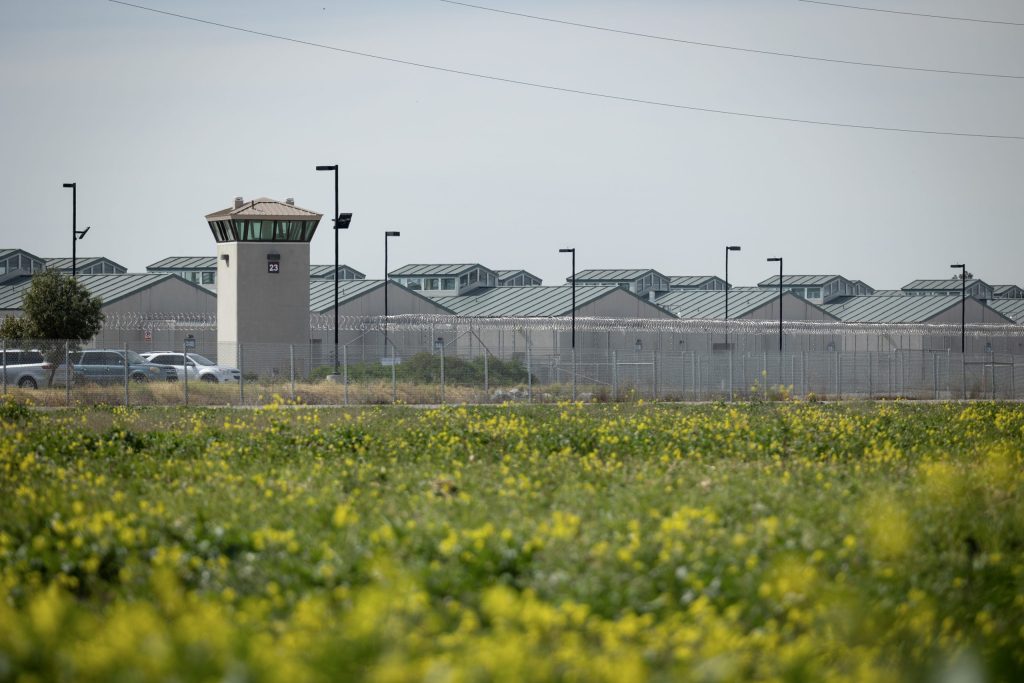Good morning, Inequality Insights readers. I’m Wendy Fry.
Californians are set to vote next month on Proposition 36, which aims to reduce drug-related crimes by steering repeat offenders toward treatment rather than prison. The ballot initiative would also increase punishments for certain drug and theft offenses. It appears likely to pass, with polls showing voters broadly supporting the measure. California Local News Fellow Cayla Mihalovich looked into one of the measure’s key promises and found behavioral health leaders concerned it won’t be fulfilled because counties lack sufficient facilities, services and staff.
Prop. 36 would create what it calls a “treatment-mandated felony.” Prosecutors could bring the charge against people arrested for possession of certain drugs, such as fentanyl or heroin, who have two or more previous convictions for certain drug crimes. If a defendant pleads guilty or no contest, they would be able to choose between treatment or up to three years behind bars. Those who finish treatment would have their charges dismissed.
Supporters argue Prop. 36 is necessary to address the state’s drug crisis and homelessness. They say the measure can save lives and offer drug users a better chance to stay housed and reintegrate into society. Yolo County District Attorney Jeff Reisig said the measure gives judges more leverage to mandate treatment in California’s voluntary drug court system, which saw participation plummet after the state stopped sending many drug users to jail.
Behavioral health experts, however, warn that California lacks the capacity to support the influx of individuals that would be mandated into treatment.
Contra Costa County Chief Public Defender Ellen McDonnell said Prop. 36 would criminalize poverty and increase the over-incarceration of Black and brown people. She called the mandated treatment a “fantasy” given the lack of resources.
A 2022 report by California’s Department of Health Care Services found 70% of the state’s 58 counties reported “urgently needing” residential addiction treatment services. Nearly two dozen counties had no residential treatment at all. Read more in Cayla’s story for CalMatters.
DON’T MISS
Back pay. Tens of thousands of California ride-hailing drivers may eventually get back pay after a recent U.S. Supreme Court decision allowing California to proceed in its wage theft lawsuits against Uber and Lyft filed in 2020, writes CalMatters economy reporter Levi Sumagaysay.
Jail deaths. Inland Empire inmates make up 19% of those who die in custody. Jail time or arrests became death sentences for 442 people who died in custody in the Inland Empire from 2011 to 2022, a criminal justice nonprofit found. That includes 216 deaths in custody in San Bernardino County and 226 deaths in Riverside County, CalMatters’ Deborah Brennan reports.
Foster kids. Nearly 9,000 foster children in California are at risk of losing their homes due to an insurance crisis threatening the existence of nonprofit foster family agencies, which are struggling with rising costs and potential loss of coverage, the San Francisco Standard reports.
Bank loans. Increasingly, racial data is being left out of bank mortgage reporting, making it harder for regulators to enforce lending equity laws, according to Yahoo finance. Some 5,000 U.S. financial institutions are required to collect information about race. The policy is meant to help flag potential discrimination against borrowers.
Immigration shift. U.S. public opinion on immigration has shifted dramatically, with a significant increase in anti-immigration sentiment over the past four years. This shift is driven by both partisan backlash against the Biden administration and reactions to border issues, according to The Atlantic.
School discipline. A recently released report by the U.S. Government Accountability Office found that Black girls receive more frequent and more severe discipline in school than other girls. Black female students comprised 15 percent of all girls in public schools, but they received almost half of suspensions and expulsions, 2017–18 school data shows.
Thanks for following our work on the California Divide team. While you’re here, please tell us what kinds of stories you’d love to read. Email us at inequalityinsights@calmatters.org.
Thanks for reading,
Wendy and the California Divide Team

